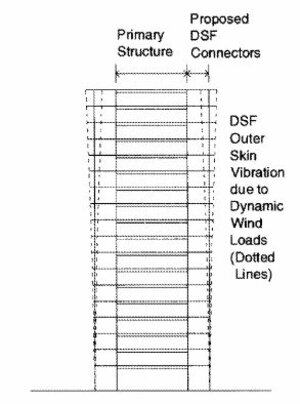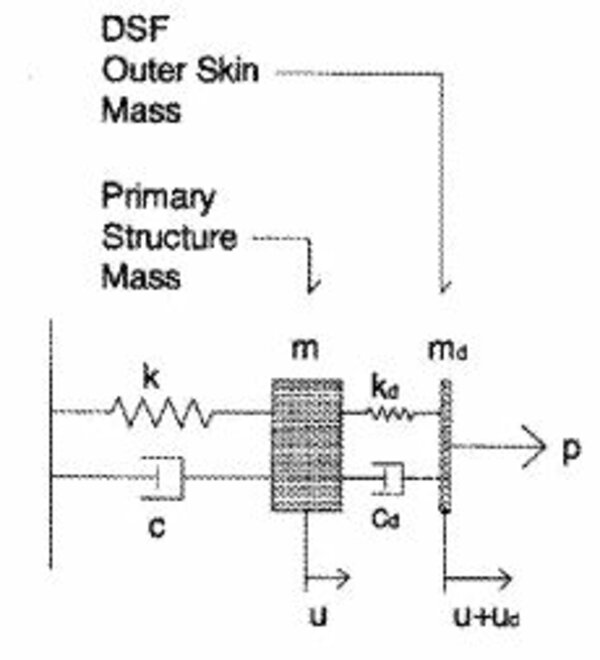Reducing the impact of wind on high-rise structures
In response of the research by K.S. Moon this study will develop a façade with integrated damping to reduce the dynamic impact of wind
Student Ted Kuijpers
Commission ir. Arjan Habraken dr. ir. Jos Lichtenberg prof. dr. ir. Chris Geurts

Wind load is an important factor in high-rise structures. Without taking this factor into account it may cause serious problems. Damping is an effective method to decrease the dynamic impact of wind load. In response of the research by K.S. Moon this study will investigate the possibilities of damping in the façade. The aim of this research is to develop a product which will decrease the impact of wind load on the main structure without losing the demands of its function.
Wind load is a dynamic load which varies in force, time and place. This is the main reason why it is vulnerable for high-rise structures. In many circumstances dynamic load is determinative for the dimension and type of the main structure which causes more use of mass and material. Another issue of dynamic load is the acceleration, which is normally noticeable in the top of the structure. Apart from the safety of the construction, the acceleration can lead to unsafe and uncomfortable feeling.
Each building has his own natural frequency. The natural frequency depends on the stiffness, mass and damping properties. As was mentioned before, the wind load varies in force, time and place, which causes several frequencies. If those frequencies are getting closer to the natural frequency of the structure, the structure will vibrate (resonance). Due to this vibration, displacement, velocity and acceleration will occur. The damping ensures that the structure will reduce the dynamic impact.
Stiffness, mass and damping determine how the structure behaves with respect to the wind load. Because of various reasons, it is not possible or ideal to adjust the stiffness and mass to improve the dynamic behavior of high-rise structure. The most effective method to reduce vibrations is by damping, in this case additional damping. In existing projects there are various types of damping methods being used: passive damping, active mass damping and semi-active damping. All these forms of damping are “secondary”. Before the damping activates, the main structure is already in a motion.
K.S. Moon has studied the damping in façades (primary damping). His study has shown that damping in façades will reduce the dynamic movement of the structure (image 1). His concept can be compared with a double skin façade. The outer skin will act as mass while the connections consist of a spring and damper with low axial stiffness (image 2).
To achieve a high qualitatively product, the theoretical findings of K.S. Moon will be translated into a tangible product. First, the possibilities of damping will be studied. It is important to find the right ratio between the mass of the outer skin, the spring stiffness and the damper properties. After finding the right ratio, the system will be integrated in a real façade system and will be meet the construction requirements.

Source [1] Moon, K.S; Tall building motion control using double skin façade; Journal of architecture engineering vol. 15; 2009; 84-90